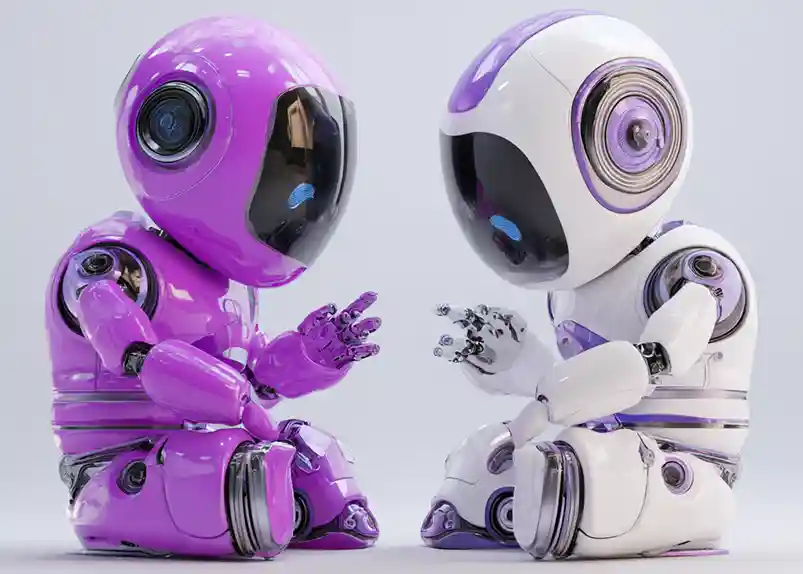As enterprise teams accelerate adoption of generative AI, the infrastructure behind intelligent agents is undergoing rapid transformation. Two emerging protocols are gaining attention for shaping how LLM-powered applications scale, communicate, and reason:
-
Model Context Protocol (MCP)
-
Agent-to-Agent Protocol (A2A)
While both aim to bring standardization and composability to AI-native architectures, they serve distinct layers of the stack. In this article, we’ll compare MCP and A2A: what they are, where they differ, and how they complement each other in AI systems built for real-world use cases.
What Is Model Context Protocol (MCP)?
Model Context Protocol (MCP) defines a standard way to assemble and deliver context. It combines grounding information, user state, tool availability, and more, into an LLM call.
Think of MCP as a framework for context engineering: selecting the right inputs, dynamically composing them into structured prompts, and managing how the AI model “sees” the world at any point in time.
Key Capabilities:
-
Pluggable Context Sources (e.g., embeddings, APIs, documents, memory)
-
Dynamic Prompt Composition
-
Tool and Function Declaration
-
User and Session State Management
-
Protocol-aware LLM invocation
MCP is designed for agentic systems, RAG pipelines, and orchestration frameworks (e.g., LangChain, SpringAI, LlamaIndex) where developers need precise control over what data is fed into the model and in what structure.
It abstracts prompt construction into a standard schema, allowing you to decouple the "what" (knowledge sources, functions) from the "how" (prompt templates, model selection).
Analogy: MCP is to LLM inputs what REST is to HTTP APIs: a standard for interaction, enabling tools and models to speak a shared contextual language.
What Is the Agent-to-Agent Protocol (A2A)?
The Agent-to-Agent Protocol (A2A) focuses on communication between autonomous AI agents. It defines how agents share messages, delegate tasks, negotiate roles, and coordinate across distributed systems.
Where MCP governs how a single model or agent is "fed" information, A2A governs how multiple agents talk to one another to complete workflows.
Key Capabilities:
-
Structured Message Passing Between Agents
-
Role Definition and Delegation
-
Task Negotiation and Coordination
-
Inter-agent Memory and Identity Management
-
Chain-of-Thought Sharing
A2A is foundational to multi-agent systems, where no single agent has all the context or capability. For example, in a collaborative AI team:
-
A “Planner” agent delegates to a “Researcher”
-
A “Developer” agent builds a script based on the Researcher’s input
-
A “Reviewer” agent validates the output and returns a report
A2A protocols define the structure, semantics, and metadata that make this type of interaction interoperable and trackable.
Head-to-Head Comparison: MCP vs. A2A
| Feature | Model Context Protocol (MCP) | Agent-to-Agent Protocol (A2A) |
|---|---|---|
| Primary Focus | Delivering structured context to a model | Communication and coordination between agents |
| Domain | Prompt engineering, RAG, context management | Multi-agent collaboration, task orchestration |
| Scope | One agent/model at a time | Many agents interacting |
| Typical Use Case | Building context-aware single-agent systems | Composing multi-agent workflows (e.g., planner-executor patterns) |
| Standardizes | How inputs (memory, tools, user state) are delivered to LLMs | How tasks, messages, and roles are exchanged between agents |
| Analogy | HTML for structured AI inputs | SMTP or RPC for agent messaging |
| Adoption Context | Used in frameworks like LangChain, Haystack, and custom RAG pipelines | Gaining traction in multi-agent orchestration platforms like CrewAI, AutoGen, and open agents ecosystems |
Real-World Use Cases
Let’s look at where each protocol fits in production-level systems:
🔹 Model Context Protocol in a Content Platform
In a CMS with AI authoring assistance:
-
MCP manages how editorial guidelines, brand voice, and user intent are composed into prompts.
-
It selects content from prior articles, embeds brand tone, and adds active tools like summarizers or SEO checkers.
-
The result is a consistent, context-rich LLM call that reflects both the user’s goal and system constraints.
🔹 A2A Protocol in a Developer Copilot
In a DevOps platform using agent-based automation:
-
A “Planner” agent outlines a CI/CD pipeline.
-
A “Code Generator” writes YAML configurations.
-
A “Validator” runs simulations and reports outcomes.
Each agent has a role and communicates with others using A2A messages. Tasks are delegated, intermediate outputs are passed, and final decisions are made collaboratively.
How They Work Together
MCP and A2A aren’t competing standards. Instead, they’re complementary layers in the AI agent stack.
-
MCP defines how individual agents access memory, instructions, and tools in a consistent way.
-
A2A defines how multiple agents exchange messages, coordinate behavior, and divide responsibilities.
In fact, in many advanced systems, every message passed via A2A may result in one or more MCP-compliant model invocations within each agent.
Example: A2A routes a task from Agent A to Agent B; Agent B then uses MCP to assemble the right context to fulfill that task.
Open Questions and Emerging Standards
As both MCP and A2A protocols evolve, several key questions are under active discussion in the community:
-
Schema Standards: Should MCP adopt a canonical JSON schema for context blocks, functions, and memories? Should A2A define a universal message envelope?
-
Security & Trust: How do agents authenticate messages? How do you prevent malicious delegation in multi-agent networks?
-
Observability: How can logs, traces, and lineage be preserved across A2A chains and MCP contexts?
-
Interop: Will MCP and A2A converge around shared tooling, or stay as domain-specific layers?
Expect these discussions to intensify as enterprises move from single-agent tools to agent ecosystems that must coordinate in real-time.
Conclusion
As AI-native architectures go mainstream, protocols like MCP and A2A will shape how developers build, scale, and standardize intelligent systems.
-
Model Context Protocol (MCP) gives you fine-grained control over what a model sees and how it behaves, all of which is essential for accuracy, traceability, and brand alignment.
-
Agent-to-Agent Protocol (A2A) unlocks scalable collaboration between agents for modularity, task automation, and distributed reasoning.
If you’re building AI agents that need to be both smart and scalable, these protocols are foundational.

 Suresh Venkat
Suresh Venkat




